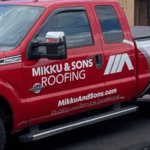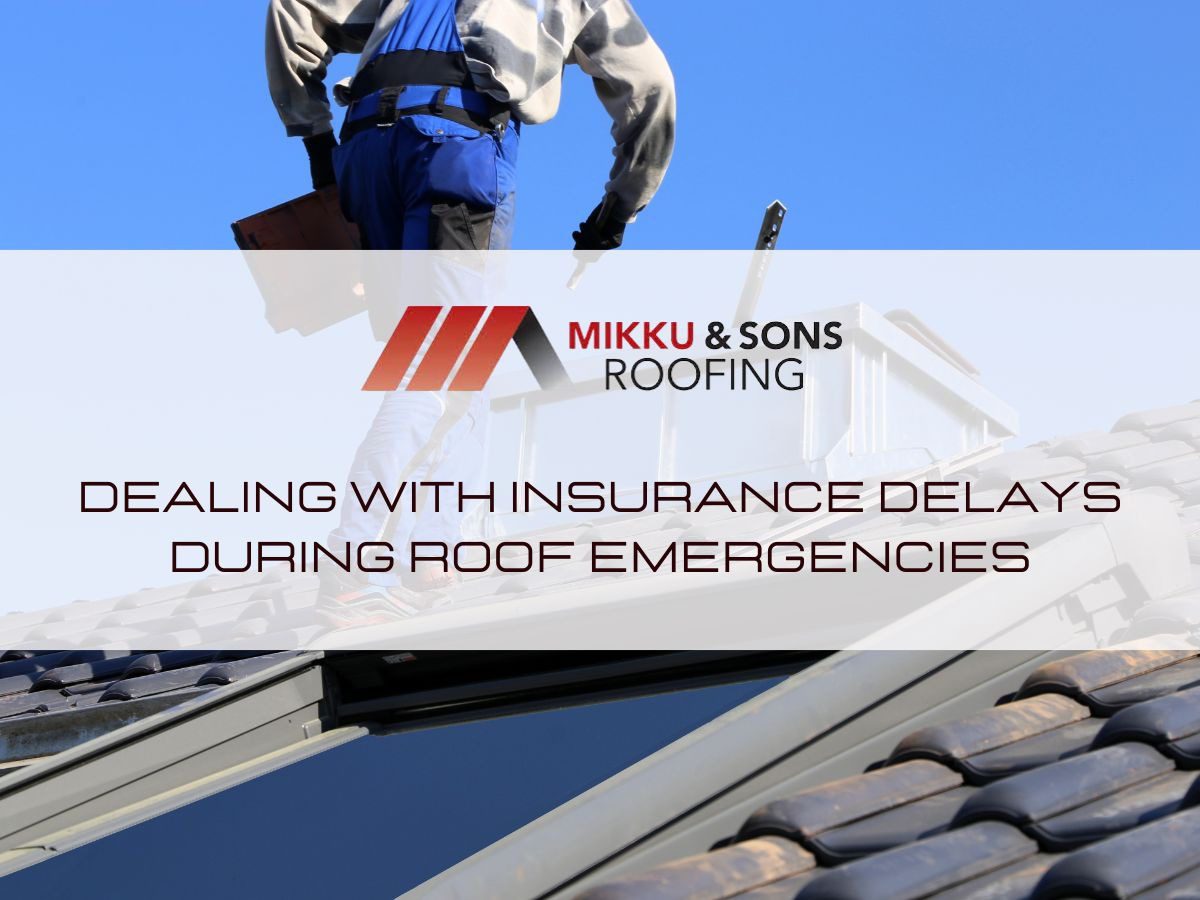
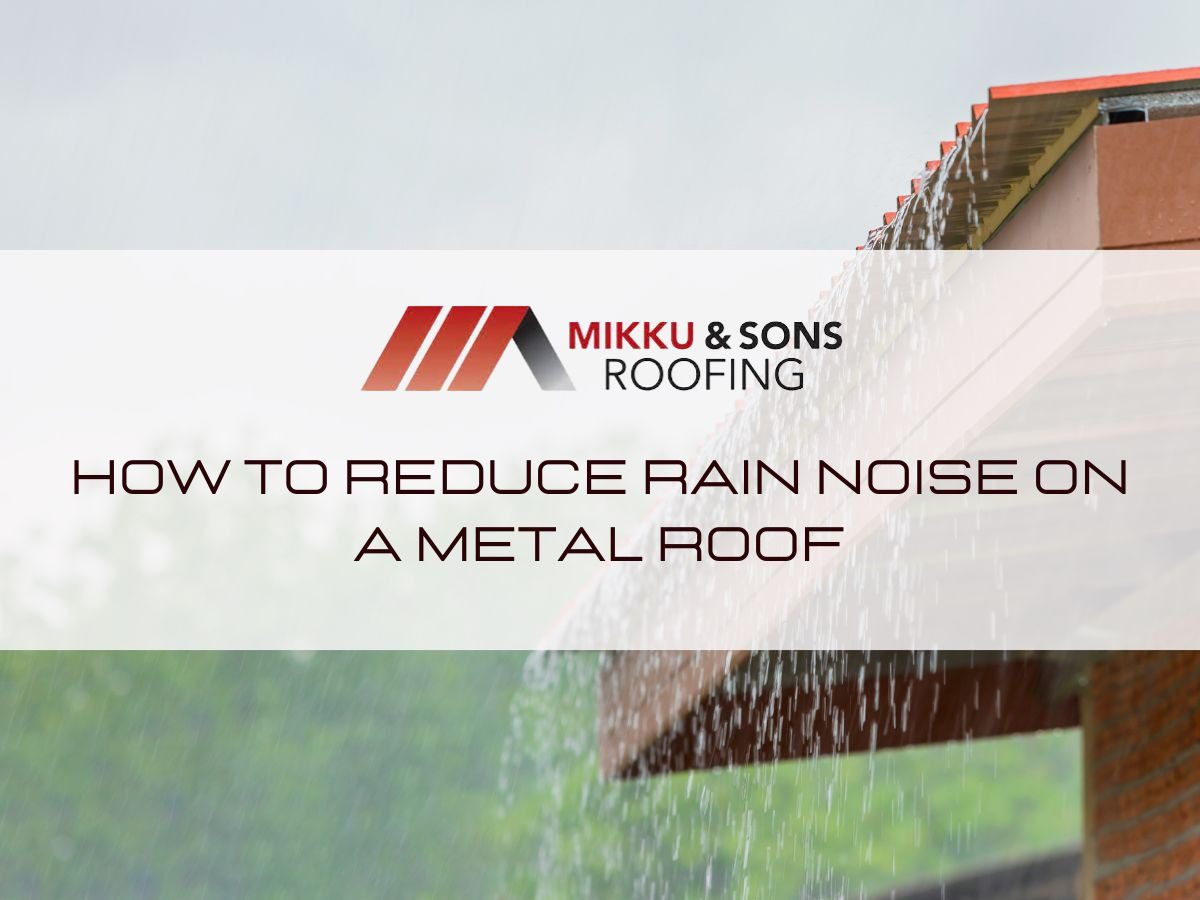
The best way to reduce rain noise on a metal roof is by combining proper insulation, quality underlayment, and secure installation. These elements work together to absorb vibrations, dampen sound, and prevent the loud drumming effect that rain can cause on metal surfaces. Whether you’re building a new home or upgrading an existing one, investing in soundproofing measures can make your living space quieter, more comfortable, and more energy-efficient.
This article also explains why metal roofs can be noisy, how roof design affects sound, and how they compare to other materials. You’ll learn whether to handle improvements yourself or hire a professional, and get maintenance tips for keeping your roof quiet.
Metal roofs are known for their strength and durability, but one common drawback is the distinct noise they make during rainfall or hail. This sound results from several design and installation factors that allow vibrations to travel easily through the roof’s structure.
In short, metal roof noise stems from a mix of vibration, impact, and structural resonance—all of which can be minimized through proper insulation, underlayment, and installation techniques.
A noisy metal roof can disrupt your home’s comfort, especially during heavy downpours. Thankfully, there are several effective strategies that not only reduce rain noise but also enhance the overall durability and energy efficiency of your roofing system.
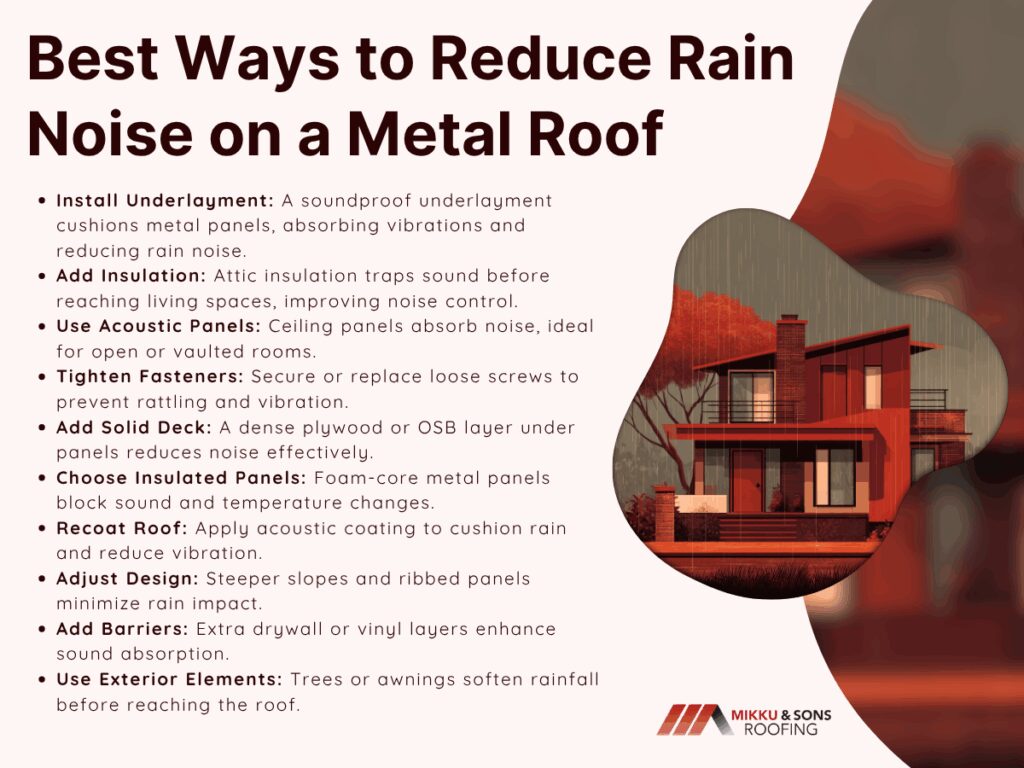
A soundproof or rubberized underlayment creates a cushioning layer between the metal panels and the roof decking. It absorbs vibrations caused by rain impact, reducing the drumming noise that often travels through ceilings and walls.
Installing quality insulation in the attic or ceiling helps trap and absorb sound waves before they reach your living space. Fiberglass batts, spray foam, or cellulose insulation are great options that also provide added thermal efficiency.
Acoustic ceiling panels or tiles can significantly reduce echo and absorb noise from above. They’re ideal for rooms with open or vaulted ceilings where sound tends to travel more freely.
Loose or poorly installed fasteners can cause metal panels to rattle, making rain sound louder. Regularly inspecting and tightening screws, or replacing them with rubber-washer fasteners, helps prevent unwanted vibrations.
Adding a solid substrate such as plywood or oriented strand board (OSB) beneath metal panels provides a dense base that minimizes sound transmission. This layer also improves roof stability and longevity.
Insulated metal panels (IMPs) feature a built-in foam core that blocks both noise and temperature fluctuations. Although more costly upfront, they’re a long-term solution for quieter, energy-efficient homes.
Applying a soft elastomeric or acoustic coating can cushion the impact of raindrops and reduce reverberation. Regular roof maintenance ensures sealants and fasteners remain tight, preventing noise caused by movement or wear.
The slope, shape, and layout of your roof affect how rainwater impacts the metal surface. Steeper roofs allow rain to slide off faster, reducing the impact sound, while textured or ribbed panels scatter raindrops and minimize resonance.
Adding an extra drywall layer or mass-loaded vinyl barrier under the ceiling enhances sound absorption. This layered approach is especially useful in thin-roof structures or converted attic spaces.
Strategically placed trees, pergolas, or awnings can break the force of rain before it hits the roof. While not a direct fix, these elements reduce the intensity of rainfall noise and add curb appeal.
Minimizing rain noise on a metal roof requires a combination of sound-dampening materials, design choices, and consistent maintenance. By addressing both structural and acoustic factors, you can enjoy the lasting benefits of a metal roof—strength, efficiency, and now, peace and quiet.
The design of a metal roof plays a major role in how much noise it produces during rainfall. Factors such as panel type, roof slope, and fastening methods all influence how sound travels and resonates through the structure.
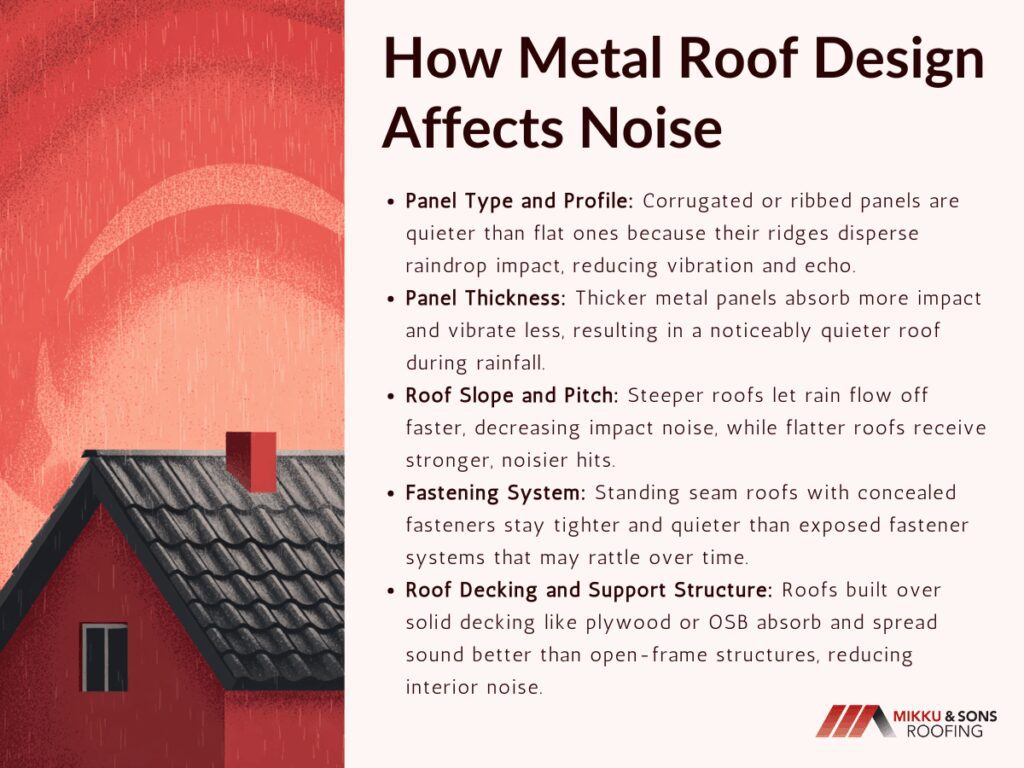
A well-designed metal roof—featuring the right panel type, pitch, and fastening system—can greatly reduce rain noise. Understanding these design factors helps homeowners choose roofing systems that combine durability with comfort.
While metal roofs are often perceived as noisier than other types, the truth depends largely on installation quality, insulation, and design. Different roofing materials have unique sound absorption properties, and understanding these differences helps homeowners make better choices when prioritizing comfort and noise reduction.
| Roofing Material | Typical Noise Level During Rain | Sound Characteristics | Noise Reduction Potential (with insulation) |
| Metal Roof (Uninsulated) | High | Can produce a drumming or pinging sound when rain or hail strikes the surface. | ★★★☆☆ |
| Metal Roof (With Insulation & Underlayment) | Low to Medium | Proper underlayment and insulation can absorb vibration and make it as quiet as asphalt shingles. | ★★★★★ |
| Asphalt Shingles | Low | Dense and layered, asphalt shingles naturally absorb sound from rain impact. | ★★★★☆ |
| Clay or Concrete Tiles | Medium | Heavy and solid, tiles muffle impact but can create echo in hollow attic spaces. | ★★★☆☆ |
| Wood Shakes or Shingles | Medium | Natural fibers reduce impact sound, but noise can increase as the material ages or dries. | ★★★★☆ |
| Slate Roofing | Low | Dense and thick, slate provides excellent natural sound absorption, though it’s heavy and costly. | ★★★★★ |
In general, metal roofs are not inherently louder than other materials when properly installed with soundproofing layers. Modern roofing systems with insulation, solid decking, and acoustic underlayment make metal roofs just as quiet—sometimes even quieter—than traditional shingle or tile roofs.
When comparing materials, it’s clear that installation quality matters more than the roofing type itself. With proper insulation and underlayment, a metal roof offers the same peace and quiet as any other premium roofing option—along with superior durability and energy efficiency.
Reducing rain noise on a metal roof can be approached through DIY methods or professional solutions, depending on the complexity of the problem and your comfort level with home improvement tasks. Understanding the differences helps homeowners choose the most effective approach for their situation.
DIY solutions are ideal for quick, low-cost noise improvements, but professional intervention is recommended for major upgrades or persistent issues to achieve optimal results.
Regular maintenance is essential to preserving a quiet and durable metal roof. Over time, weather exposure and natural wear can loosen fasteners, degrade coatings, or create gaps that amplify noise. By following these simple upkeep practices, you can ensure your roof remains both silent and strong.
Consistent maintenance keeps your metal roof quiet, secure, and efficient. By addressing small issues early, you can avoid costly repairs while enjoying lasting peace and comfort inside your home.
Reducing rain noise on a metal roof is achievable through a combination of proper insulation, quality underlayment, secure fastening, and thoughtful roof design. Whether you choose DIY fixes for minor improvements or professional solutions for long-term quiet, addressing both structural and acoustic factors ensures a more comfortable living space.
By understanding why metal roofs can be noisy, comparing materials, and maintaining your roof, homeowners can enjoy the durability and energy efficiency of metal roofing without the unwanted drumming of rain. Consistent maintenance and smart upgrades make a metal roof not just strong, but peacefully quiet as well.
